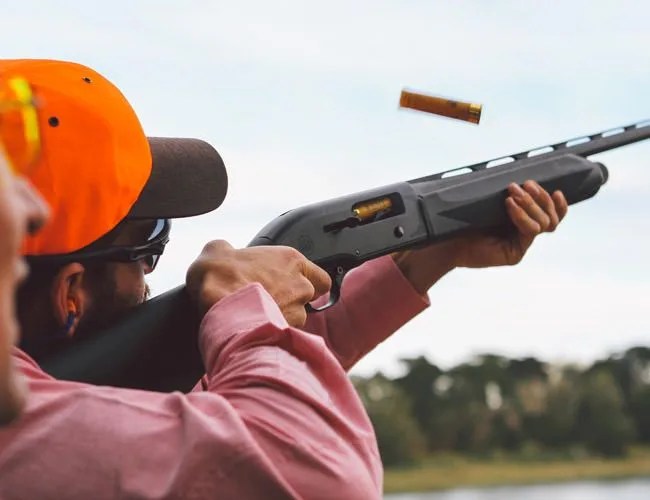A shotgun’s target is most often this: a small, fast-moving object, aided and jostled by the wind, moving at 25 to 70 mph and constantly changing direction. The gun has a range of about 40 yards, giving you about two to four seconds to react, mount, and discharge the shot. You do things right, your target falls. You screw up, and the target flies free. Practice is optional — but when you hit the fields, it’s best you hit your target. So, the precursor of any hunting trip is putting in some time at the range. The basics of skeet shooting will translate, with some guile and instinct, into more accurate shooting once you hit the field.
I lined up an introductory shotgun lesson at San Francisco’s iconic Pacific Rod and Gun Club, a shotgun range in the city that’s hosted big names like Clark Gable and Ernest Hemingway. It’s been around since 1928, and sits on the banks of Lake Merced. The instructor, Richard, met me at Station 8, sporting Emporio Armani glasses and a Cabela’s vest. He spoke with a British accent, but he learned to shoot here in the States.
Richard starts with conceptual basics, like “rifles are aimed, shotguns are pointed.” It registered, at first, as a bit vague — just “point your gun at your target and shoot” — but the idea, on closer examination, fits with shotgunning’s proper technique. What good shooters train to do is shoot with their eyes, seeing and tracking the target and then ensuring that the rest of their motion is properly lined up. Throughout, the eyes are ahead of the gun, on the target, not on the barrel. Like anything involving hand-and-eye coordination (swinging a golf club, for example), the focus should be on the object (ball), not the apparatus (club). In this case, I’m looking to the clay pigeon, not the rib or sight. My dominant eye will locate the target, while my support eye will triangulate.
If all is done well, the shotgun lines up with my dominant eye, and when I pull the trigger I hit the target. “If the gun is perfectly centered under the pupil of our dominant eye,” Richard says, “the gun will shoot where we look.” That’s the idea, anyway. Execution is another thing, and that breaks down into five fundamentals. Like any sport, the better you refine the basics, the better your performance come time to hunt.
1Stance and Posture.
Skeet vs. Trap vs. Sporting
There are three major disciplines in clay pigeon shooting. Here’s how they differ:
Trap: one “house” out of which pigeons are launched, generally, away from the shooter.
Skeet: two “houses” — one low, one high — that are on opposite ends of an arch marked on the ground. The shooter stands at different spots on the arch, and the clays are launched and intersect in front of the shooter.
Sporting Clay: an entire course laid out with many launchers at each stand. This is like golf, with “holes” being “stands,” and it introduces a new layout at each spot. Each stands launches clays in a variety of directions in front of the shooter.
In shooting skeet, you have the luxury of lining up the body. Out in the field, you set your feet as best you can. The proper form is to have your feet relatively narrow, under your shoulders, and your front foot pointing forward, the back foot nearly perpendicular. Your crotch should be aimed where you anticipate the target to fly. It’s a casually open stance, like stepping up for a pee; you’ll be shooting in the direction where the stream would fly.
